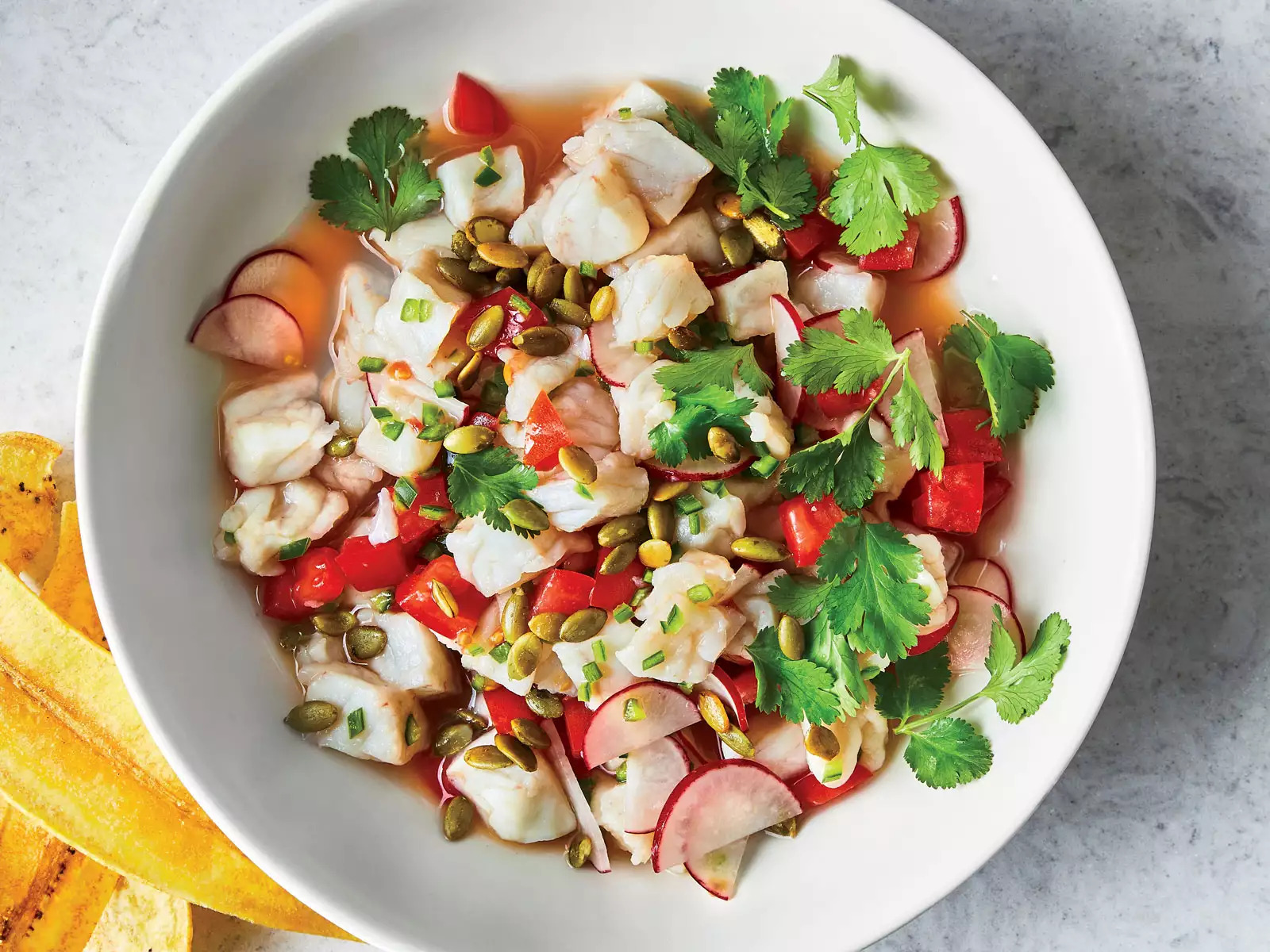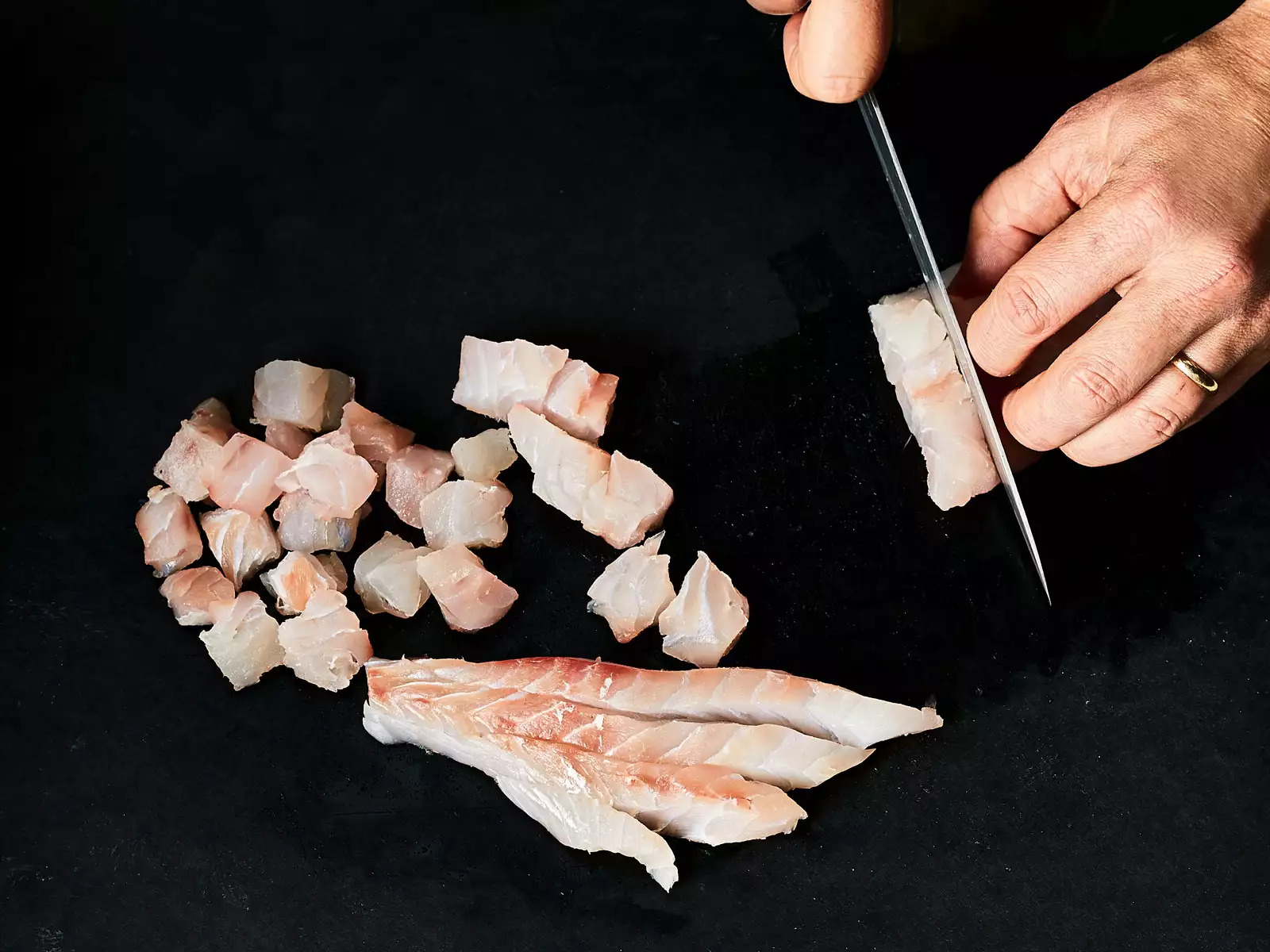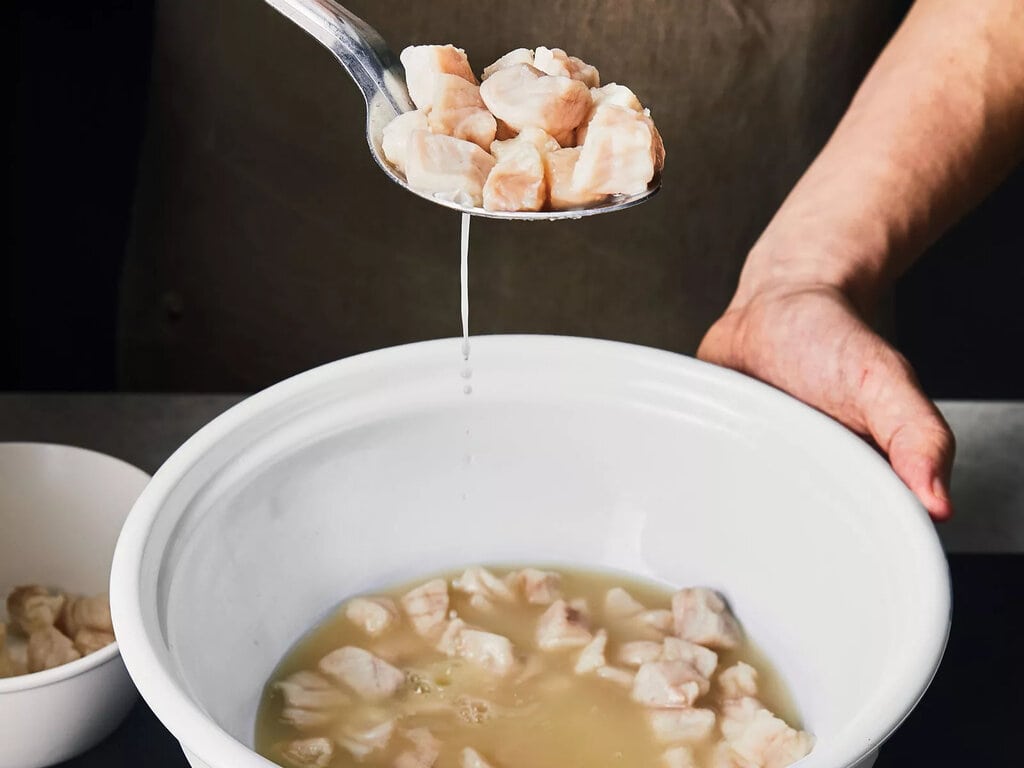Ceviche is chilled fish with citrus dressing and is a common dish in homes and eateries across Central and South America, practically wherever there’s a coastline. A fine combination of salt, acidity, freshness, and crunch yields a mouthwatering ceviche. Although it’s a common misconception that soaking raw fish in acidic liquids “cooks” the seafood, what happens is that the protein gets denatured. For flavor and food safety reasons, it’s crucial to utilize the freshest, most sustainably sourced fish and shellfish you can find when making any seafood meal.

A Few Important Things
Lean, white-fleshed fish are favored in Latin America for ceviche. Flounder, red snapper, and orange roughy are popular choices. Sashimi-grade tuna and halibut are also excellent choices. To maintain food safety, shellfish should be blanched before being utilized in ceviche recipes. Shellfish should be cooked in salted boiling water until almost opaque before being quickly plunged into ice water to chill.
The Coastal Recipe for Ceviche
Trim the fish – Debone, and skin the fish with a sharp knife. By gently cutting in a V-shape down either side of the bloodline, remove the bloodline and discard. Use tweezers to get rid of pin bones.
Dice it – When flattening cooled fillets, set them on a cutting board and gently press with your palm. If preferred, use a ruler to slice the fish into consistent pieces as instructed.

Marinate it – Fresh lemon juice should thoroughly cover the fish in a medium dish. (Leaving fish exposed to air will lead to a final texture that’s uneven.) Let it rest for 30 minutes.
Prep the ingredients – Prepare the mix-ins and garnishes while the fish marinates. To make the ceviche easier to eat, the other ingredients should be cut into pieces that are comparable in size to the cubed fish.
Drain or Retain?

In this recipe, the marinating liquid, referred to as ‘Leche de Tigre’ (tiger’s milk), is drained and thrown away.
Finishing Touch
To preserve their soft leaves from the acidic marinade, store delicate garnishes like herbs until right before serving. Toss marinated fish with veggies. If necessary, add a little salt, and don’t forget the chips!